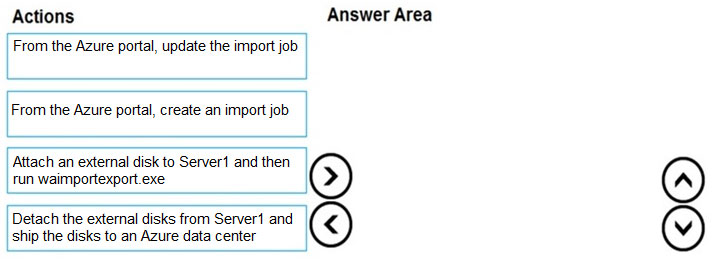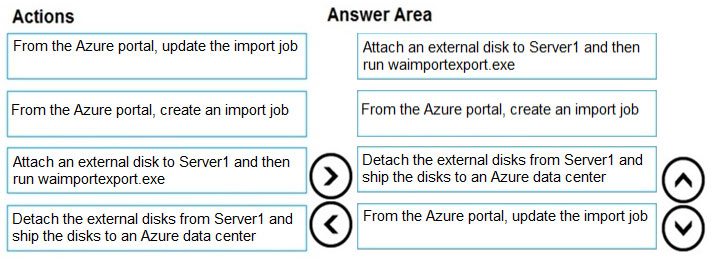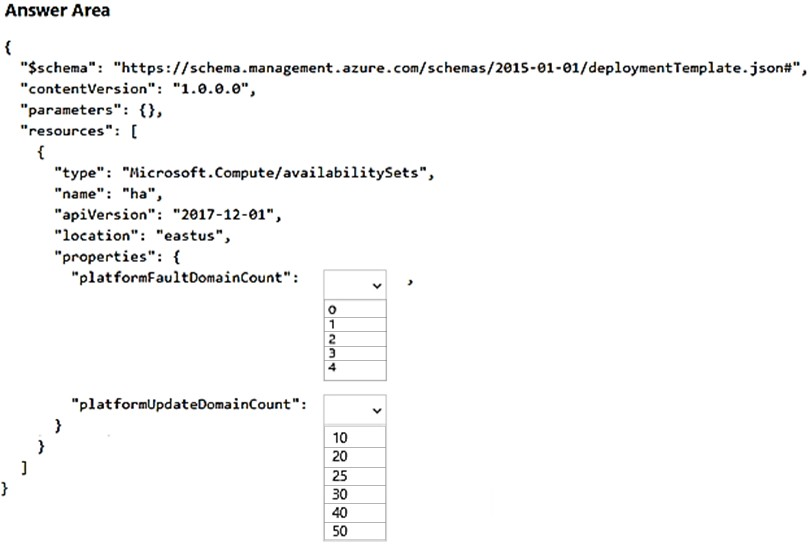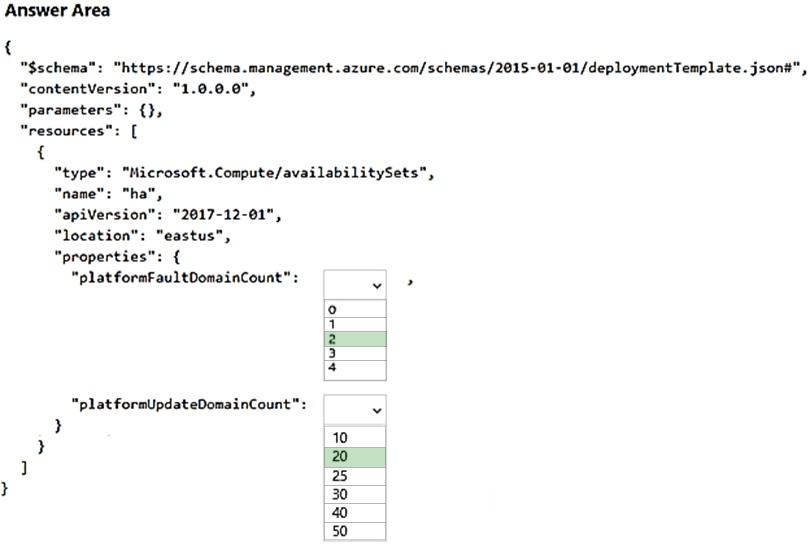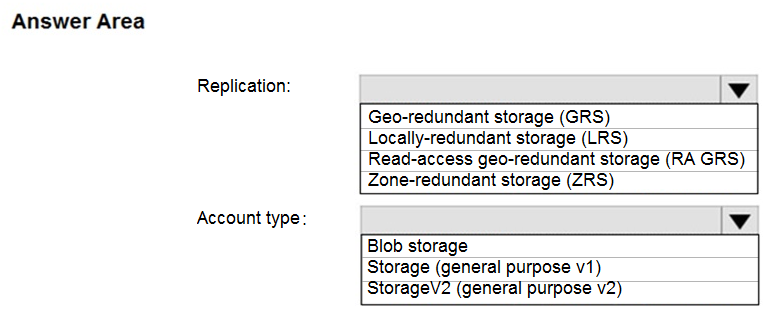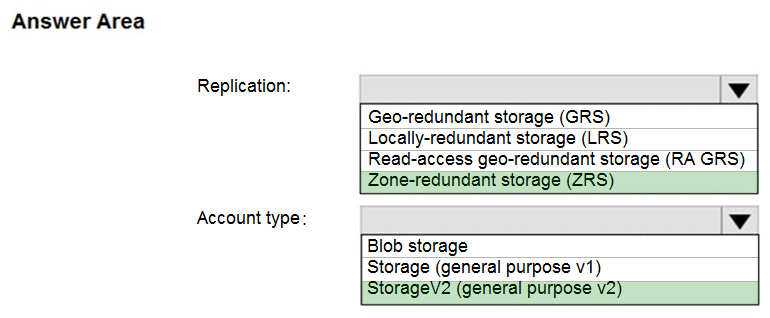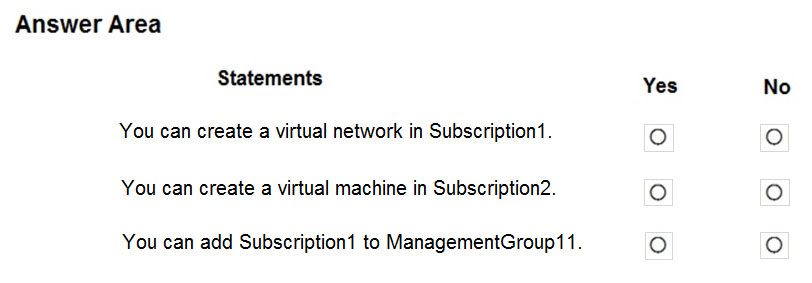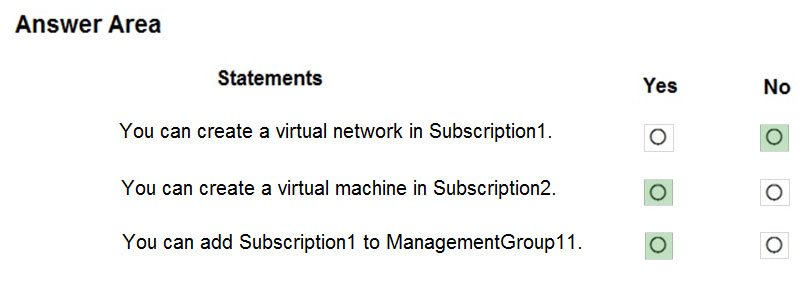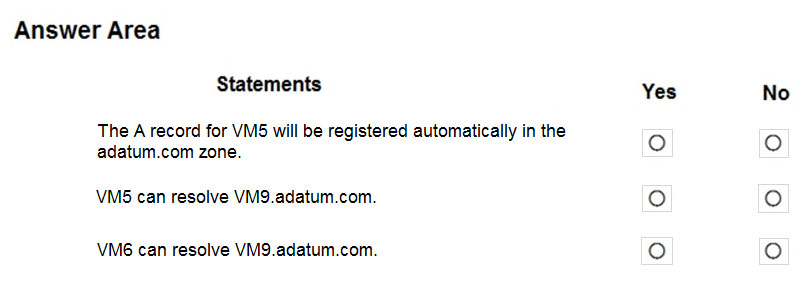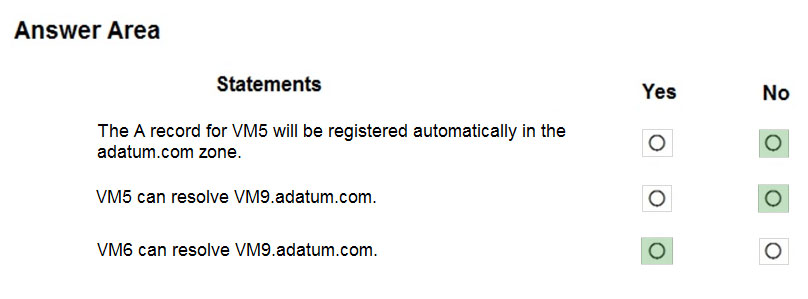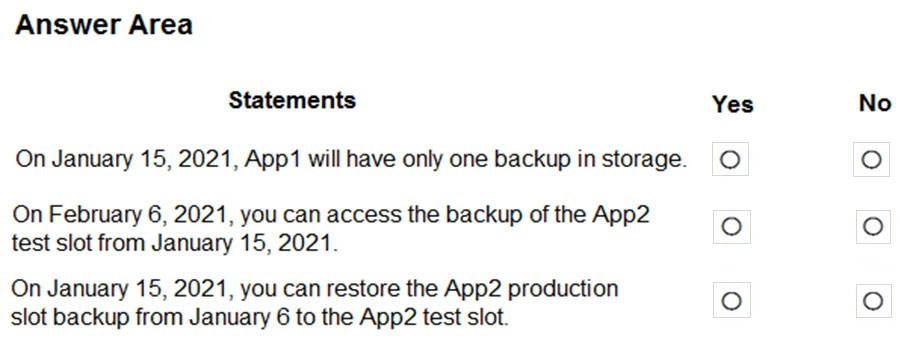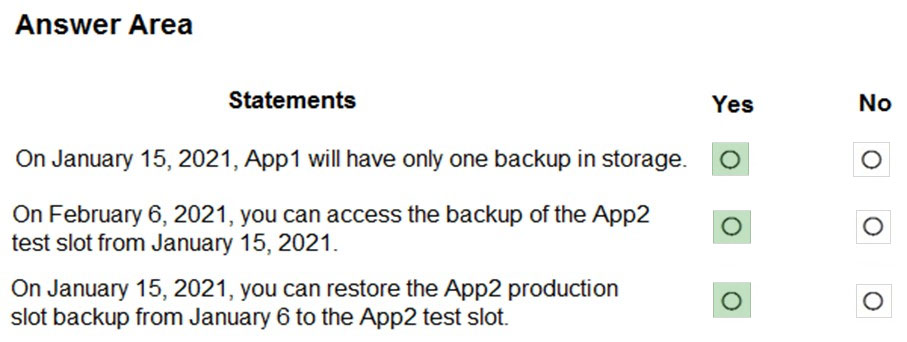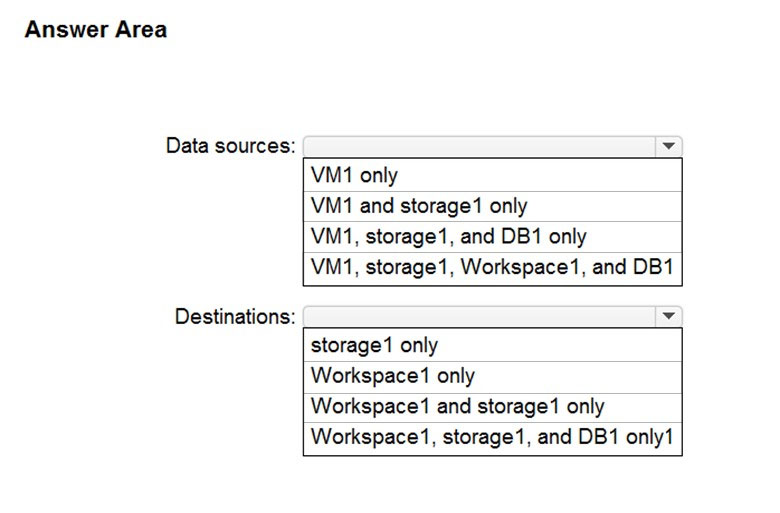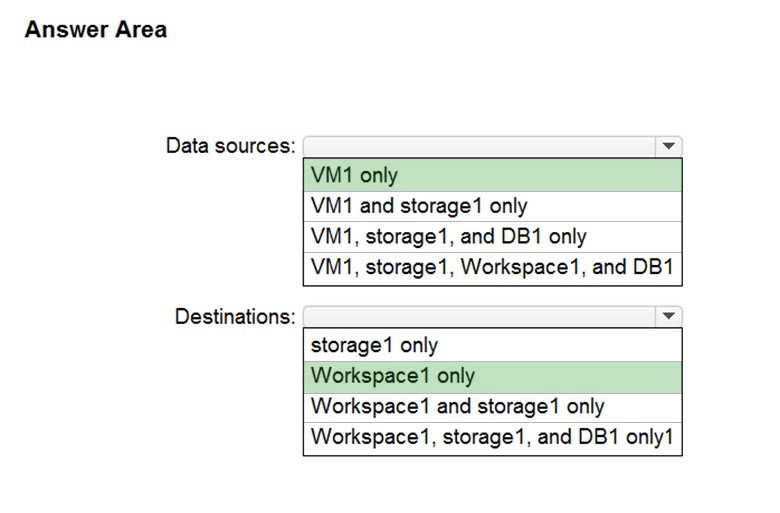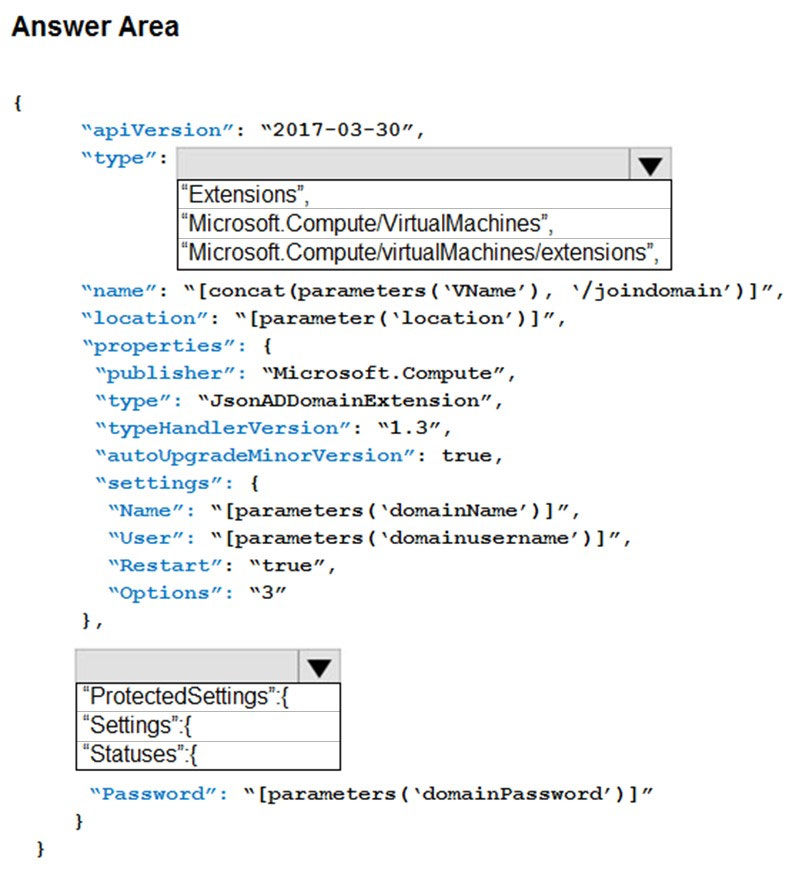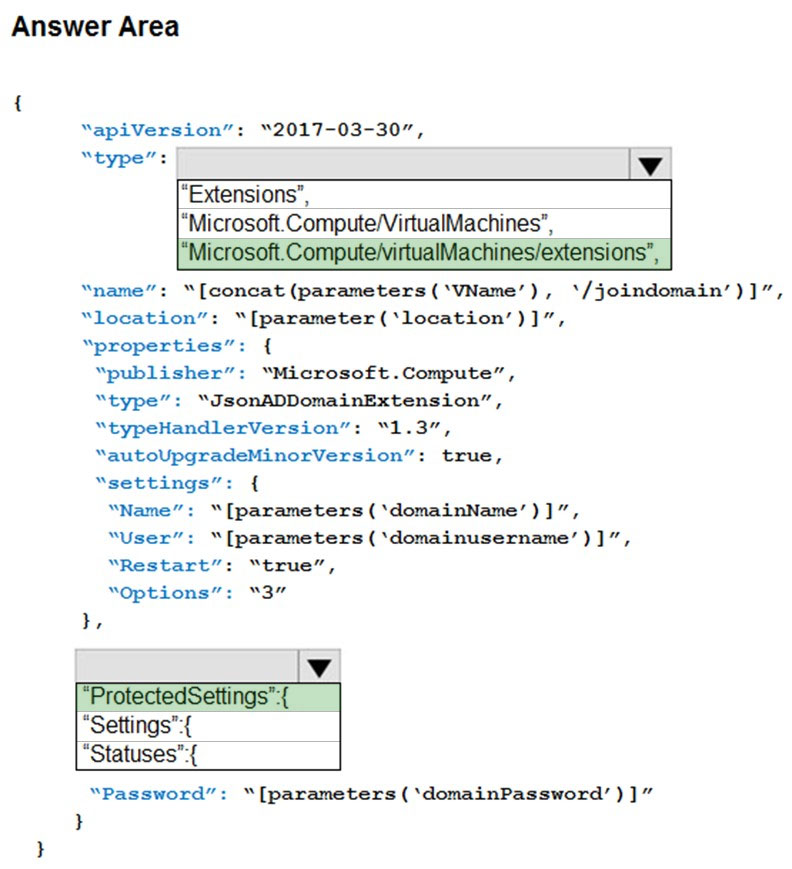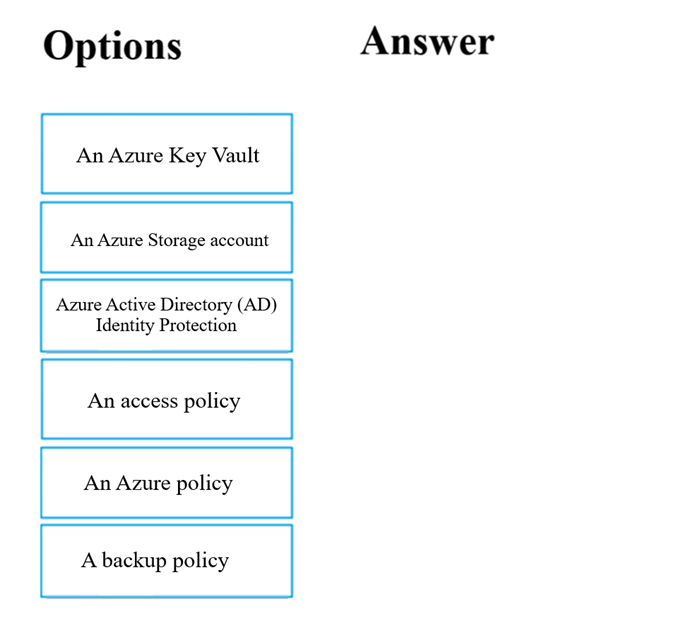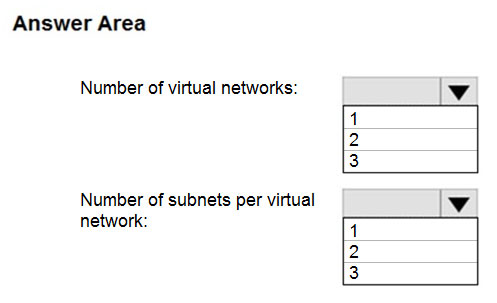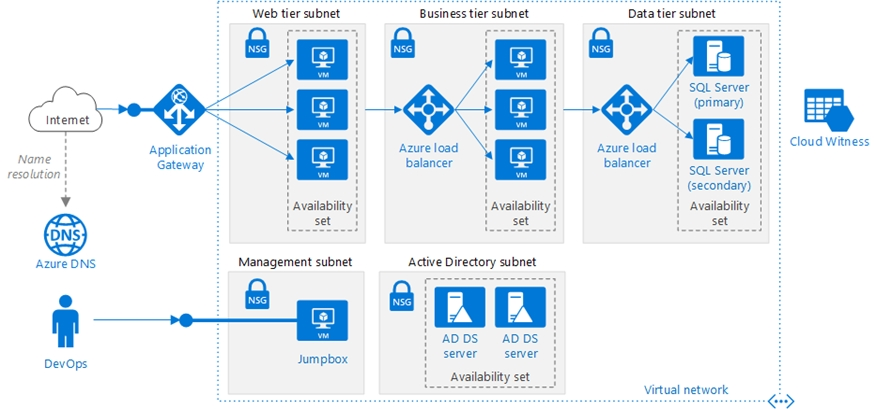AZ-104 Dump Free – 50 Practice Questions to Sharpen Your Exam Readiness.
Looking for a reliable way to prepare for your AZ-104 certification? Our AZ-104 Dump Free includes 50 exam-style practice questions designed to reflect real test scenarios—helping you study smarter and pass with confidence.
Using an AZ-104 dump free set of questions can give you an edge in your exam prep by helping you:
- Understand the format and types of questions you’ll face
- Pinpoint weak areas and focus your study efforts
- Boost your confidence with realistic question practice
Below, you will find 50 free questions from our AZ-104 Dump Free collection. These cover key topics and are structured to simulate the difficulty level of the real exam, making them a valuable tool for review or final prep.
Your on-premises network contains a VPN gateway. You have an Azure subscription that contains the resources shown in the following table.You need to ensure that all the traffic from VM1 to storage1 travels across the Microsoft backbone network. What should you configure?
A. Azure AD Application Proxy
B. service endpoints
C. a network security group (NSG)
D. Azure Firewall
DRAG DROP - You have an Azure subscription that contains a storage account. You have an on-premises server named Server1 that runs Windows Server 2016. Server1 has 2 TB of data. You need to transfer the data to the storage account by using the Azure Import/Export service. In which order should you perform the actions? To answer, move all actions from the list of actions to the answer area and arrange them in the correct order. NOTE: More than one order of answer choices is correct. You will receive credit for any of the correct orders you select. Select and Place:
HOTSPOT - You have an Azure subscription. You plan to use Azure Resource Manager templates to deploy 50 Azure virtual machines that will be part of the same availability set. You need to ensure that as many virtual machines as possible are available if the fabric fails or during servicing. How should you configure the template? To answer, select the appropriate options in the answer area. NOTE: Each correct selection is worth one point. Hot Area:
You have an Azure subscription named Subscription1 that contains an Azure Log Analytics workspace named Workspace1. You need to view the error events from a table named Event. Which query should you run in Workspace1?
A. Get-Event Event | where {$_.EventType == “error”}
B. search in (Event) “error”
C. select * from Event where EventType == “error”
D. search in (Event) * | where EventType -eq “error”
You have an Azure subscription. You plan to migrate 50 virtual machines from VMware vSphere to the subscription. You create a Recovery Services vault. What should you do next?
A. Configure an extended network.
B. Create a recovery plan.
C. Deploy an Open Virtualization Application (OVA) template to vSphere.
D. Configure a virtual network.
You have an Azure Active Directory (Azure AD) tenant that is linked to 10 Azure subscriptions. You need to centrally monitor user activity across all the subscriptions. What should you use?
A. Azure Application Insights Profiler
B. access reviews
C. Activity log filters
D. a Log Analytics workspace
DRAG DROP - You have an Azure subscription that contains two on-premises locations named site1 and site2. You need to connect site1 and site2 by using an Azure Virtual WAN. Which four actions should you perform in sequence? To answer, move the appropriate actions from the list of actions to the answer area and arrange them in the correct order. Select and Place:
Note: This question is part of a series of questions that present the same scenario. Each question in the series contains a unique solution that might meet the stated goals. Some question sets might have more than one correct solution, while others might not have a correct solution. After you answer a question in this section, you will NOT be able to return to it. As a result, these questions will not appear in the review screen. You have an Azure Active Directory (Azure AD) tenant named contoso.com. You have a CSV file that contains the names and email addresses of 500 external users. You need to create a guest user account in contoso.com for each of the 500 external users. Solution: You create a PowerShell script that runs the New-MgInvitation cmdlet for each external user. Does this meet the goal?
A. Yes
B. No
Note: This question is part of a series of questions that present the same scenario. Each question in the series contains a unique solution that might meet the stated goals. Some question sets might have more than one correct solution, while others might not have a correct solution. After you answer a question in this section, you will NOT be able to return to it. As a result, these questions will not appear in the review screen. You need to ensure that an Azure Active Directory (Azure AD) user named Admin1 is assigned the required role to enable Traffic Analytics for an Azure subscription. Solution: You assign the Network Contributor role at the subscription level to Admin1. Does this meet the goal?
A. Yes
B. No
Note: This question is part of a series of questions that present the same scenario. Each question in the series contains a unique solution that might meet the stated goals. Some question sets might have more than one correct solution, while others might not have a correct solution. After you answer a question in this section, you will NOT be able to return to it. As a result, these questions will not appear in the review screen. You have an Azure Active Directory (Azure AD) tenant named contoso.com. You have a CSV file that contains the names and email addresses of 500 external users. You need to create a guest user account in contoso.com for each of the 500 external users. Solution: You create a PowerShell script that runs the New-MgUser cmdlet for each user. Does this meet the goal?
A. Yes
B. No
You have five Azure virtual machines that run Windows Server 2016. The virtual machines are configured as web servers. You have an Azure load balancer named LB1 that provides load balancing services for the virtual machines. You need to ensure that visitors are serviced by the same web server for each request. What should you configure?
A. Session persistence to None
B. a health probe
C. Session persistence to Client IP
D. Idle Time-out (minutes) to 20
You have an Azure subscription. The subscription contains a storage account named storage1 that has the lifecycle management rules shown in the following table.On June 1, you store a blob named File1 in the Hot access tier of storage1. What is the state of File1 on June 7?
A. stored in the Cool access tier
B. stored in the Archive access tier
C. stored in the Hot access tier
D. deleted
HOTSPOT - You plan to create an Azure Storage account in the Azure region of East US 2. You need to create a storage account that meets the following requirements: ✑ Replicates synchronously. ✑ Remains available if a single data center in the region fails. How should you configure the storage account? To answer, select the appropriate options in the answer area. NOTE: Each correct selection is worth one point. Hot Area:
You have an Azure Active Directory (Azure AD) tenant named contoso.onmicrosoft.com that contains 100 user accounts. You purchase 10 Azure AD Premium P2 licenses for the tenant. You need to ensure that 10 users can use all the Azure AD Premium features. What should you do?
A. From the Licenses blade of Azure AD, assign a license
B. From the Groups blade of each user, invite the users to a group
C. From the Azure AD domain, add an enterprise application
D. From the Directory role blade of each user, modify the directory role
HOTSPOT - You have an Azure subscription named Sub1 that contains the resources shown in the following table.Sub1 contains the following alert rule: • Name: Alert1 • Scope: All resource groups in Sub1 o Include all future resources • Condition: All administrative operations • Actions: Action1 Sub1 contains the following alert processing rule: • Name: Rule1 • Scope: Sub1 • Rule type: Suppress notifications • Apply the rule: On a specific time o Start: August 10, 2022 o End: August 13, 2022 For each of the following statements, select Yes if the statement is true. Otherwise, select No. NOTE: Each correct selection is worth one point.
HOTSPOT - You have the Azure management groups shown in the following table:You add Azure subscriptions to the management groups as shown in the following table:
You create the Azure policies shown in the following table:
For each of the following statements, select Yes if the statement is true. Otherwise, select No. NOTE: Each correct selection is worth one point. Hot Area:
You have web apps in the West US, Central US and East US Azure regions. You have the App Service plans shown in the following table.You plan to create an additional App Service plan named ASP5 that will use the Linux operating system. You need to identify in which of the currently used locations you can deploy ASP5. What should you recommend?
A. West US, Central US, or East US
B. Central US only
C. East US only
D. West US only
HOTSPOT - You have an Azure subscription that contains the resources in the following table:In Azure, you create a private DNS zone named adatum.com. You set the registration virtual network to VNet2. The adatum.com zone is configured as shown in the following exhibit:
For each of the following statements, select Yes if the statement is true. Otherwise, select No. NOTE: Each correct selection is worth one point. Hot Area:
HOTSPOT - You have an Azure subscription that contains the resources shown in the following table.In Azure Cloud Shell, you need to create a virtual machine by using an Azure Resource Manager (ARM) template. How should you complete the command? To answer, select the appropriate options in the answer area. NOTE: Each correct selection is worth one point. Hot Area:
You have an Azure subscription that contains the devices shown in the following table.On which devices can you install Azure Storage Explorer?
A. Device1 only
B. Device1 and Device2 only
C. Device1 and Device3 only
D. Device1, Device2, and Device3 only
E. Device1, Device3, and Device4 only
You have a subnet named Subnet1 that contains Azure virtual machines. A network security group (NSG) named NSG1 is associated to Subnet1. NSG1 only contains the default rules. You need to create a rule in NSG1 to prevent the hosts on Subnet1 form connecting to the Azure portal. The hosts must be able to connect to other internet hosts. To what should you set Destination in the rule?
A. Application security group
B. IP Addresses
C. Service Tag
D. Any
You have a registered DNS domain named contoso.com. You create a public Azure DNS zone named contoso.com. You need to ensure that records created in the contoso.com zone are resolvable from the internet. What should you do?
A. Create NS records in contoso.com.
B. Modify the SOA record in the DNS domain registrar.
C. Create the SOA record in contoso.com.
D. Modify the NS records in the DNS domain registrar.
You have five Azure virtual machines that run Windows Server 2016. The virtual machines are configured as web servers. You have an Azure load balancer named LB1 that provides load balancing services for the virtual machines. You need to ensure that visitors are serviced by the same web server for each request. What should you configure?
A. Session persistence to None
B. a health probe
C. Session persistence to Client IP and protocol
D. Idle Time-out (minutes) to 20
HOTSPOT - You have two Azure App Service app named App1 and App2. Each app has a production deployment slot and a test deployment slot. The Backup Configuration settings for the production slots are shown in the following table.For each of the following statements, select Yes if the statement is true. Otherwise, select No. NOTE: Each correct selection is worth one point. Hot Area:
You have a virtual network named VNet1 as shown in the exhibit. (Click the Exhibit tab.)No devices are connected to VNet1. You plan to peer VNet1 to another virtual network named VNet2. VNet2 has an address space of 10.2.0.0/16. You need to create the peering. What should you do first?
A. Modify the address space of VNet1.
B. Add a gateway subnet to VNet1.
C. Create a subnet on VNet1 and VNet2.
D. Configure a service endpoint on VNet2.
You create an Azure Storage account named contosostorage. You plan to create a file share named data. Users need to map a drive to the data file share from home computers that run Windows 10. Which outbound port should you open between the home computers and the data file share?
A. 80
B. 443
C. 445
D. 3389
HOTSPOT - Overview - ADatum Corporation is consulting firm that has a main office in Montreal and branch offices in Seattle and New York. Existing Environment - Azure Environment - ADatum has an Azure subscription that contains three resource groups named RG1, RG2, and RG3. The subscription contains the storage accounts shown in the following table.The subscription contains the virtual machines shown in the following table.
The subscription has an Azure container registry that contains the images shown in the following table.
The subscription contains the resources shown in the following table.
Azure Key Vault - The subscription contains an Azure key vault named Vault1. Vault1 contains the certificates shown in the following table.
Vault1 contains the keys shown in the following table.
Microsoft Entra Environment - ADatum has a Microsoft Entra tenant named adatum.com that is linked to the Azure subscription and contains the users shown in the following table.
The tenant contains the groups shown in the following table.
The adatum.com tenant has a custom security attribute named Attribute1. Planned Changes - ADatum plans to implement the following changes: • Configure a data collection rule (DCR) named DCR1 to collect only system events that have an event ID of 4648 from VM2 and VM4. • In storage1, create a new container named cont2 that has the following access policies: o Three stored access policies named Stored1, Stored2, and Stored3 o A legal hold for immutable blob storage • Whenever possible, use directories to organize storage account content. • Grant User1 the permissions required to link Zone1 to VNet1. • Assign Attribute1 to supported adatum.com resources. • In storage2, create an encryption scope named Scope1. • Deploy new containers by using Image1 or Image2. Technical Requirements - ADatum must meet the following technical requirements: • Use TLS for WebApp1. • Follow the principle of least privilege. • Grant permissions at the required scope only. • Ensure that Scope1 is used to encrypt storage services. • Use Azure Backup to back up cont1 and share1 as frequently as possible. • Whenever possible, use Azure Disk Encryption and a key encryption key (KEK) to encrypt the virtual machines. You implement the planned changes for cont2. What is the maximum number of additional access policies you can create for cont2? To answer, select the appropriate options in the answer area. NOTE: Each correct selection is worth one point.
HOTSPOT - You have an Azure subscription that contains the vaults shown in the following table.You deploy the virtual machines shown in the following table.
You have the backup policies shown in the following table.
For each of the following statements, select Yes if the statement is true. Otherwise, select No. NOTE: Each correct selection is worth one point.
You have an Azure subscription named Subscription1. You have 5 TB of data that you need to transfer to Subscription1. You plan to use an Azure Import/Export job. What can you use as the destination of the imported data?
A. a virtual machine
B. an Azure Cosmos DB database
C. Azure File Storage
D. the Azure File Sync Storage Sync Service
You have an Azure subscription that contains the storage accounts shown in the following table.Which storage account can be converted to zone-redundant storage (ZRS) replication?
A. storage1 only
B. storage2 only
C. storage3 only
D. storage2 and storage3
E. storage1, storage2, and storage3
Overview - General Overview - Contoso, Ltd. is a consulting company that has a main office in Montreal and branch offices in Seattle and New York. Environment - Existing Environment - Contoso has an Azure subscription named Sub1 that is linked to an Azure Active Directory (Azure AD) tenant. The network contains an on-premises Active Directory domain that syncs to the Azure AD tenant. The Azure AD tenant contains the users shown in the following table.Sub1 contains two resource groups named RG1 and RG2 and the virtual networks shown in the following table.
User1 manages the resources in RG1. User4 manages the resources in RG2. Sub1 contains virtual machines that run Windows Server 2019 as shown in the following table
No network security groups (NSGs) are associated to the network interfaces or the subnets. Sub1 contains the storage accounts shown in the following table.
Requirements - Planned Changes - Contoso plans to implement the following changes: Create a blob container named container1 and a file share named share1 that will use the Cool storage tier. Create a storage account named storage5 and configure storage replication for the Blob service. Create an NSG named NSG1 that will have the custom inbound security rules shown in the following table.
Associate NSG1 to the network interface of VM1. Create an NSG named NSG2 that will have the custom outbound security rules shown in the following table.

Associate NSG2 to VNET1/Subnet2. Technical Requirements - Contoso must meet the following technical requirements: Create container1 and share1. Use the principle of least privilege. Create an Azure AD security group named Group4. Back up the Azure file shares and virtual machines by using Azure Backup. Trigger an alert if VM1 or VM2 has less than 20 GB of free space on volume C. Enable User1 to create Azure policy definitions and User2 to assign Azure policies to RG1. Create an internal Basic Azure Load Balancer named LB1 and connect the load balancer to VNET1/Subnet1 Enable flow logging for IP traffic from VM5 and retain the flow logs for a period of eight months. Whenever possible, grant Group4 Azure role-based access control (Azure RBAC) read-only permissions to the Azure file shares. You need to add VM1 and VM2 to the backend pool of LB1. What should you do first?
A. Connect VM2 to VNET1/Subnet1.
B. Redeploy VM1 and VM2 to the same availability zone.
C. Redeploy VM1 and VM2 to the same availability set.
D. Create a new NSG and associate the NSG to VNET1/Subnet1.
You have two Azure subscriptions named Sub1 and Sub2 that are linked to separate Microsoft Entra tenants.You have the virtual networks shown in the following table. Which virtual networks can you peer with VNet1?
A. VNet2 only
B. VNet2 and VNet3 only
C. VNet2 and VNet4 only
D. VNet2, VNet3, and VNet4 only
E. VNet2, VNet3, VNet4, and VNet5
Note: The question is included in a number of questions that depicts the identical set-up. However, every question has a distinctive result. Establish if the solution satisfies the requirements. Your company's Azure subscription includes two Azure networks named VirtualNetworkA and VirtualNetworkB. VirtualNetworkA includes a VPN gateway that is configured to make use of static routing. Also, a site-to-site VPN connection exists between your company's on- premises network and VirtualNetworkA. You have configured a point-to-site VPN connection to VirtualNetworkA from a workstation running Windows 10. After configuring virtual network peering between VirtualNetworkA and VirtualNetworkB, you confirm that you are able to access VirtualNetworkB from the company's on-premises network. However, you find that you cannot establish a connection to VirtualNetworkB from the Windows 10 workstation. You have to make sure that a connection to VirtualNetworkB can be established from the Windows 10 workstation. Solution: You choose the Allow gateway transit setting on VirtualNetworkB. Does the solution meet the goal?
A. Yes
B. No
HOTSPOT - You have an Azure subscription that contains the virtual machines shown in the following table.The subscription contains a storage account named contoso2024 as shown in the following exhibit.
For each of the following statements, select Yes if the statement is true. Otherwise, select No.
You have an Azure subscription that contains a user named User1. You need to ensure that User1 can deploy virtual machines and manage virtual networks. The solution must use the principle of least privilege. Which role-based access control (RBAC) role should you assign to User1?
A. Owner
B. Virtual Machine Contributor
C. Contributor
D. Virtual Machine Administrator Login
You have an Azure subscription named Subscription1 that contains virtual network named VNet1. VNet1 is in a resource group named RG1. User named User1 has the following roles for Subscription1: • Reader • Security Admin • Security Reader You need to ensure that User1 can assign the Reader role for VNet1 to other users. What should you do?
A. Remove User1 from the Security Reader and Reader roles for Subscription1. Assign User1 the Contributor role for Subscription1.
B. Remove User1 from the Security Reader role for Subscription1. Assign User1 the Contributor role for RG1.
C. Assign User1 the Network Contributor role for VNet1.
D. Assign User1 the User Access Administrator role for VNet1.
HOTSPOT - You have an Azure App Service web app named app1. You configure autoscaling as shown in following exhibit.You configure the autoscale rule criteria as shown in the following exhibit.
Use the drop-down menus to select the answer choice that answers each question based on the information presented in the graphic. NOTE: Each correct selection is worth one point.
You are planning to deploy an Ubuntu Server virtual machine to your company's Azure subscription. You are required to implement a custom deployment that includes adding a particular trusted root certification authority (CA). Which of the following should you use to create the virtual machine?
A. The New-AzureRmVm cmdlet.
B. The New-AzVM cmdlet.
C. The Create-AzVM cmdlet.
D. The az vm create command.
HOTSPOT - You have an Azure subscription that contains the resources shown in the following table.You plan to create a data collection rule named DCR1 in Azure Monitor. Which resources can you set as data sources in DCR1, and which resources can you set as destinations in DCR1? To answer, select the appropriate options in the answer area. NOTE: Each correct selection is worth one point. Hot Area:
You have an Azure subscription that contains a storage account named storage1 in the North Europe Azure region. You need to ensure that when blob data is added to storage1, a secondary copy is created in the East US region. The solution must minimize administrative effort. What should you configure?
A. operational backup
B. object replication
C. geo-redundant storage (GRS)
D. a lifecycle management rule
HOTSPOT - You have an Azure subscription. The subscription contains a virtual machine that runs Windows 10. You need to join the virtual machine to an Active Directory domain. How should you complete the Azure Resource Manager (ARM) template? To answer, select the appropriate options in the answer area. NOTE: Each correct selection is worth one point. Hot Area:
DRAG DROP - You have downloaded an Azure Resource Manager (ARM) template to deploy numerous virtual machines (VMs). The ARM template is based on a current VM, but must be adapted to reference an administrative password. You need to make sure that the password cannot be stored in plain text. You are preparing to create the necessary components to achieve your goal. Which of the following should you create to achieve your goal? Answer by dragging the correct option from the list to the answer area. Select and Place:
Overview - Contoso, Ltd. is a manufacturing company that has offices worldwide. Contoso works with partner organizations to bring products to market. Contoso products are manufactured by using blueprint files that the company authors and maintains. Existing Environment - Currently, Contoso uses multiple types of servers for business operations, including the following: File servers Domain controllers Microsoft SQL Server servers Your network contains an Active Directory forest named contoso.com. All servers and client computers are joined to Active Directory. You have a public-facing application named App1. App1 is comprised of the following three tiers: A SQL database A web front end A processing middle tier -Each tier is comprised of five virtual machines. Users access the web front end by using HTTPS only. Requirements - Planned Changes - Contoso plans to implement the following changes to the infrastructure: Move all the tiers of App1 to Azure. Move the existing product blueprint files to Azure Blob storage. Create a hybrid directory to support an upcoming Microsoft 365 migration project. Technical Requirements - Contoso must meet the following technical requirements: Move all the virtual machines for App1 to Azure. Minimize the number of open ports between the App1 tiers. Ensure that all the virtual machines for App1 are protected by backups. Copy the blueprint files to Azure over the Internet. Ensure that the blueprint files are stored in the archive storage tier. Ensure that partner access to the blueprint files is secured and temporary. Prevent user passwords or hashes of passwords from being stored in Azure. Use unmanaged standard storage for the hard disks of the virtual machines. Ensure that when users join devices to Azure Active Directory (Azure AD), the users use a mobile phone to verify their identity. Minimize administrative effort whenever possible. User Requirements - Contoso identifies the following requirements for users: Ensure that only users who are part of a group named Pilot can join devices to Azure AD. Designate a new user named Admin1 as the service admin for the Azure subscription. Admin1 must receive email alerts regarding service outages. Ensure that a new user named User3 can create network objects for the Azure subscription. HOTSPOT - You need to recommend a solution for App1. The solution must meet the technical requirements. What should you include in the recommendation? To answer, select the appropriate options in the answer area. NOTE: Each correct selection is worth one point. Hot Area:
Note: This question is part of a series of questions that present the same scenario. Each question in the series contains a unique solution that might meet the stated goals. Some question sets might have more than one correct solution, while others might not have a correct solution. After you answer a question in this section, you will NOT be able to return to it. As a result, these questions will not appear in the review screen. You have an Azure virtual machine named VM1. VM1 was deployed by using a custom Azure Resource Manager template named ARM1.json. You receive a notification that VM1 will be affected by maintenance. You need to move VM1 to a different host immediately. Solution: From the VM1 Updates blade, select One-time update. Does this meet the goal?
A. Yes
B. No
You have an Azure subscription that contains the resources shown in the following table.You need to create a network interface named NIC1. In which location can you create NIC1?
A. East US and North Europe only
B. East US only
C. East US, West Europe, and North Europe
D. East US and West Europe only
You have an Azure virtual machine named VM1. The network interface for VM1 is configured as shown in the exhibit. (Click the Exhibit tab.)You deploy a web server on VM1, and then create a secure website that is accessible by using the HTTPS protocol. VM1 is used as a web server only. You need to ensure that users can connect to the website from the Internet. What should you do?
A. Modify the protocol of Rule4
B. Delete Rule1
C. For Rule5, change the Action to Allow and change the priority to 401
D. Create a new inbound rule that allows TCP protocol 443 and configure the rule to have a priority of 501.
HOTSPOT - You have an Azure subscription that contains the users shown in the following table.The groups are configured as shown in the following table.
You have a resource group named RG1 as shown in the following exhibit.
For each of the following statements, select Yes if the statement is true. Otherwise, select No. NOTE: Each correct selection is worth one point.
Your on-premises network contains a VPN gateway. You have an Azure subscription that contains the resources shown in the following table.You need to ensure that all the traffic from VM1 to storage1 travels across the Microsoft backbone network. What should you configure?
A. a network security group (NSG)
B. private endpoints
C. Microsoft Entra Application Proxy
D. Azure Virtual WAN
You have an Azure web app named webapp1. Users report that they often experience HTTP 500 errors when they connect to webapp1. You need to provide the developers of webapp1 with real-time access to the connection errors. The solution must provide all the connection error details. What should you do first?
A. From webapp1, enable Web server logging
B. From Azure Monitor, create a workbook
C. From Azure Monitor, create a Service Health alert
D. From webapp1, turn on Application Logging
You have an Azure subscription that contains a storage account named account1. You plan to upload the disk files of a virtual machine to account1 from your on-premises network. The on-premises network uses a public IP address space of 131.107.1.0/24. You plan to use the disk files to provision an Azure virtual machine named VM1. VM1 will be attached to a virtual network named VNet1. VNet1 uses an IP address space of 192.168.0.0/24. You need to configure account1 to meet the following requirements: ✑ Ensure that you can upload the disk files to account1. ✑ Ensure that you can attach the disks to VM1. ✑ Prevent all other access to account1. Which two actions should you perform? Each correct answer presents part of the solution. NOTE: Each correct selection is worth one point.
A. From the Networking blade of account1, select Selected networks.
B. From the Networking blade of account1, select Allow trusted Microsoft services to access this storage account.
C. From the Networking blade of account1, add the 131.107.1.0/24 IP address range.
D. From the Networking blade of account1, add VNet1.
E. From the Service endpoints blade of VNet1, add a service endpoint.
Access Full AZ-104 Dump Free
Looking for even more practice questions? Click here to access the complete AZ-104 Dump Free collection, offering hundreds of questions across all exam objectives.
We regularly update our content to ensure accuracy and relevance—so be sure to check back for new material.
Begin your certification journey today with our AZ-104 dump free questions — and get one step closer to exam success!


